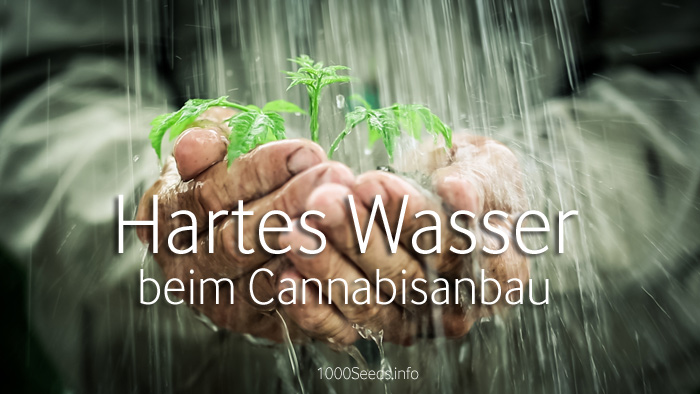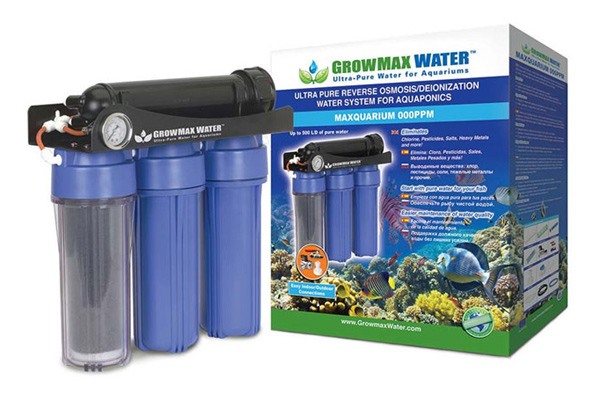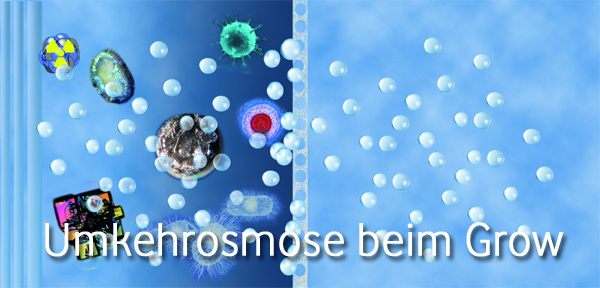Hard water and what to do about it

Water quality and hardness varies throughout Europe and varies from country to country and even from city to city. Cannabis plants suffer from hard water and cannot develop properly with it.
But what is hard water?
Hard water has a high concentration of dissolved mineral salts, especially calcium and magnesium. Hardness is measured in milligrams of calcium carbonate per liter (mg/L); in the USA ppm (parts per million). Depending on how high the concentration of calcium and magnesium is, a distinction is made between the following types of water:
- Soft water: has a concentration of less than 150 mg/L calcium carbonate.
- semi-soft water: has a concentration between 150-200 mg/L calcium carbonate.
- Hard water: has a concentration between 200-400 mg/L calcium carbonate.
- Very hard water: has a concentration between 400-550 mg/L calcium carbonate.
Hard water can cause problems when growing cannabis. Calcium deposits in the roots mean that nutrients can no longer be absorbed properly by the plants. So it may happen that the nutrient applications then have no or little desired effects. If fertilizers with additional calcium and magnesium are given in connection with hard water, it can even come to a nutrient blockade in the roots of the plants. All nutrients are then literally locked out and no longer allowed into the plant. The respective dissolved salt content of the water depends on where you and your plants live. By nature, plants are watered with rainwater, which is soft.
Factors that affect water quality can be: living near mountains, by the sea or in large cities. Whenever the water is too hard, it should be made soft for cannabis plants. They are one of the plants that cannot handle hard water. In most regions and cities of Europe, hard water is more of a problem. Only a few regions can enjoy soft water from the tap.
So too much calcium and magnesium in the water can cause deficiencies in the cannabis plants. Increased fertilizing will not help here either, but would make everything worse and most likely kill the plants. The only reliable method to remove dissolved salts from the water is the reverse osmosis system.
 Reverse osmosis system Maxquarium produces ultrapure water (000ppm)
Reverse osmosis system Maxquarium produces ultrapure water (000ppm)
Why use a reverse osmosis system when growing cannabis and what are the benefits?
- By using a reverse osmosis system cannabis plants become healthier and get a stronger root system
- Nutrients can be absorbed 100% and thus there is an increase in yields
- Mineral salt deposits in the roots are avoided
- Nozzles and hoses in hydroponic systems clog less and have a longer service life
In some countries, such as Germany, the water quality is very high and tap water can be drunk by people here at any time. A high calcium or magnesium content, which may also be present there, in no way makes the water more harmful to humans. Humans have a very complex organism that can handle and needs these amounts of minerals well. Cannabis plants are a little different, they are more sensitive to too high amounts of certain minerals and the fertilization program just often works less well. In short, mineral water or tap water of drinking quality is suitable for humans, but not always and automatically for cannabis plants.
How does reverse osmosis work?
Osmosis is the equalization of concentrations of two liquids through a semipermeable membrane. This always happens when two aqueous liquids with different ion concentrations are separated by a semi-permeable wall. In nature, this principle plays an important role. Only the solvent, but not the solute, is allowed to pass through a semi-permeable membrane. This allows regulation of the water balance of the cells and also maintains the internal pressure. Ion solutions separated by a membrane always want to achieve concentration equilibrium. The membrane is a barrier for ions with too high molecular size. These ions cannot easily pass through the membrane. So the smaller water molecules flow from the lower concentrated side and migrate to the higher concentrated side. The water molecules migrate until either the ion concentration on both sides is balanced or a pressure is built up on the highly concentrated side. This is called osmotic pressure. In reverse osmosis, this principle is reversed. A pressure is created on the high ion concentration side (tap water), forcing the water toward the pure water on the other side. Unwanted dissolved substances such as hardness components (calcium, magnesium) or even harmful substances such as residues of pesticides or medicines cannot pass through the extremely fine membrane to the other side to the pure water because of their molecular size.
Substances retained by the membrane must be continuously removed so that the membrane does not become clogged. That is why a reverse osmosis system produces wastewater in addition to pure water.
- Reverse osmosis water (demineralized water) has a pH of 7 GPG (grain per gallon), but only for a short time. Demineralized water quickly becomes slightly acidic (4.5 - 5.0) when carbon dioxide from the ambient air can dissolve in it.

Important tips for using a reverse osmosis system
If you use a reverse osmosis system to produce water for your plants, it may be necessary to use additives with magnesium and calcium: e.g. Cal-Max from Grotek or Calcium from CANNA, so that no deficiencies occur. In general, for fertilization programs on soil, the manufacturers assume tap water that already contains larger amounts of calcium and magnesium (here the addition of calcium and magnesium would be important if osmosis water is used). Fertilization programs for hydroponic cultivation often assume 000ppm water, which means that the fertilizers are adapted to pure water (the addition of calcium or magnesium is then often not necessary).
The individual filters of the reverse osmosis should be cleaned and replaced regularly to ensure their full functionality. This varies from manufacturer to manufacturer and also depends on the use, usually the filters are replaced every 4-6 months.
Reverse osmosis water does not have to be used pure. It can be mixed 1:1 or 2:1 with normal tap water to obtain ideal water for watering plants. The mixing ratio depends on how much calcium and magnesium or ppm are in the water. When using pure water (000ppm), magnesium or calcium should be added as described above to prevent deficiencies.





